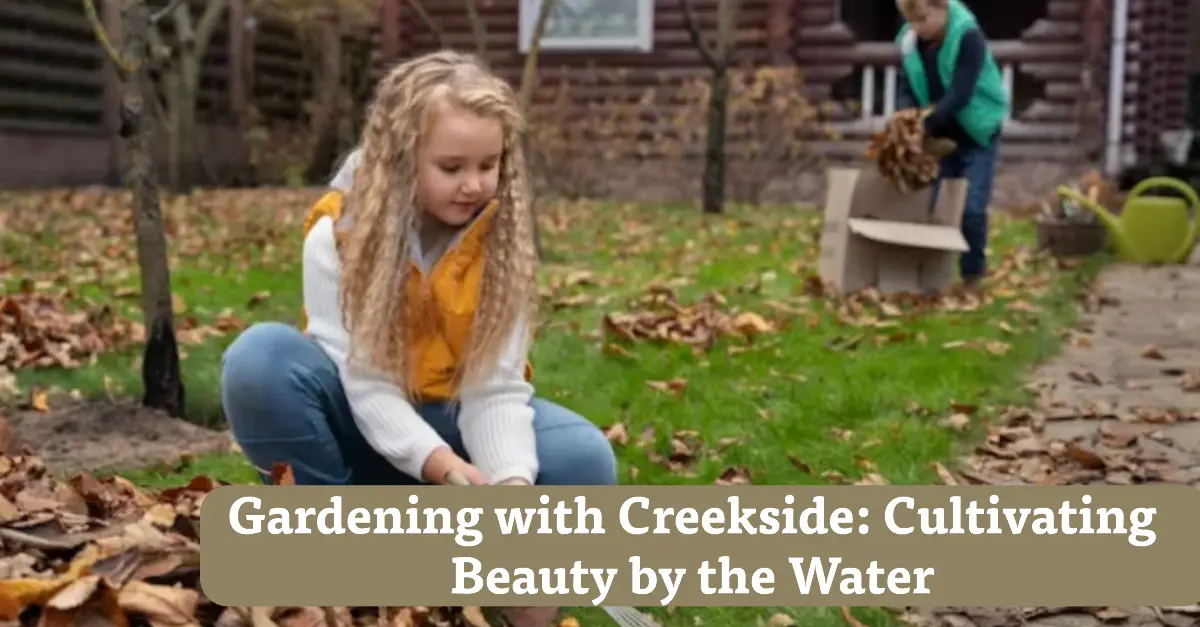Gardening with Creekside: Cultivating Beauty by the Water

Gardening with Creekside offers a unique and tranquil experience, transforming your outdoor space into a serene haven. Picture a vibrant garden alongside a gently flowing creek, where the sound of water complements the lush greenery and diverse wildlife. If you’re eager to explore the art of creekside gardening, this guide will walk you through designing a garden that flourishes in this special setting, the best plants to use, and essential care tips to ensure your garden thrives.
Why Choose Gardening with Creekside?
Creating a garden next to a creek comes with distinct advantages that set it apart from traditional gardening. The natural water source provides a humid environment, perfect for a variety of plants. Creekside gardens enjoy cooler temperatures during hot weather, and the presence of water brings the delightful sounds and sights of nature to your doorstep.
Not only does a creek enhance the aesthetics of your garden, but it also helps maintain soil moisture, reducing the need for constant watering. However, creekside gardening does present challenges, such as potential flooding or erosion. With careful planning and design, you can navigate these obstacles and cultivate a thriving, vibrant garden.
Planning Your Creekside Garden
Effective planning is crucial for a successful creekside garden. Begin by observing your creek’s surrounding area to understand water flow patterns and sunlight exposure.
- Consider the Water Flow: Monitor how the creek behaves throughout the seasons. Does it flood after heavy rain, or does it dry up during droughts? Knowing these patterns will help you select appropriate plants and design your garden effectively.
- Test the Soil: Creekside soil can vary from sandy to loamy or clay-like. Testing the soil will guide you in choosing the best plants for your garden.
- Assess Sunlight: Trees and hills near the creek may cast shadows, affecting sunlight availability. Choose plants that thrive in the light conditions of your garden.
Choosing Plants for Creekside Gardening
One of the joys of gardening with Creekside is selecting suitable plants that thrive in moist environments. Here are some excellent options:
- Water-Loving Plants: Incorporate ferns, willows, and cattails, which flourish in the moisture-rich soil near the creek and can handle occasional flooding.
- Perennials and Shrubs: Consider resilient perennials like hostas, daylilies, and dogwood shrubs that add beauty and return year after year.
- Wildflowers: Brighten your garden with native wildflowers such as coneflowers and black-eyed Susans, which attract pollinators and bring life to your landscape.
Designing Your Creekside Garden
Design your garden with thoughtful interactions with the creek. Here are some ideas to enhance your creekside experience:
- Create Pathways: Use natural stone or wood pathways that blend seamlessly into the environment, allowing easy access to your garden while preventing soil erosion.
- Incorporate a Water Feature: While the creek provides a natural water source, adding a small pond or fountain can serve as a focal point and attract diverse wildlife.
- Utilize Terracing: If your garden area is sloped, consider terracing to prevent soil erosion. Terraces create different planting levels and help retain soil.
Caring for Your Creekside Garden
Caring for a creekside garden requires some unique considerations:
- Monitor Erosion: Erosion is a significant concern in creekside gardens. Plant ground covers like creeping thyme and apply mulch to help hold soil in place.
- Pest Control: Wildlife such as deer, rabbits, and insects may visit your garden. Use natural repellents and barriers to protect your plants while promoting a healthy ecosystem.
- Regular Maintenance: Prune plants and remove weeds regularly to keep your garden looking its best.
Supporting Wildlife in Your Creekside Garden
One of the delights of creekside gardening is attracting wildlife. Birds, butterflies, and frogs enhance the beauty and health of your garden.
- Attracting Birds: Plant trees and shrubs like dogwood and elderberry to create a bird-friendly habitat, contributing to insect control and adding charm to your space.
- Encouraging Pollinators: Planting wildflowers and herbs such as lavender and thyme will attract essential pollinators like bees and butterflies.
- Creating Frog Habitats: Frogs are beneficial for controlling insects. Shallow water areas or water plants can invite frogs to make your garden their home.
Seasonal Maintenance in Creekside Gardening
Each season brings its own gardening tasks:
- Spring: The ideal time to plant new flowers and shrubs. The moist soil and warming weather provide an excellent start for new plants.
- Summer: Monitor plants closely during summer heat. While the creek provides moisture, be prepared to water during dry spells.
- Fall: Time for pruning and preparing your garden for winter. Clear dead plants and apply mulch for winter protection.
- Winter: While your garden rests, plan for the upcoming season, considering new plants or features to add in spring.
Conclusion
Gardening with Creekside is a fulfilling way to merge your love for nature with gardening. Through careful planning, the right plant selections, and regular maintenance, your creekside garden can become a tranquil oasis filled with the soothing sounds of water and vibrant blooms. Embrace the unique challenges and rewards of creekside gardening to create a stunning outdoor retreat that supports wildlife and promotes a healthy ecosystem. Whether you’re an experienced gardener or just starting out, gardening with Creekside provides an exceptional opportunity to connect with the beauty of nature.

